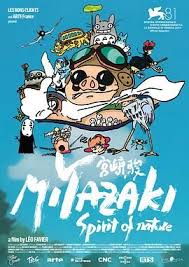For over 50 years, Hayao Miyazaki has been enchanting the world with his films. Tonari no Totoro (My Neighbor Totoro), Mononoke-hime (Princess Mononoke), Sen to Chihiro no kamikakushi (Spirited Away), or his latest film Kimitachi wa dō ikiru ka (The Boy and the Heron), to name only a few of eleven feature films, ten short films, several manga, and also through Studio Ghibli, a museum and a theme park. They form a luminous body of work and characters that have become cult classics. Miyazaki’s films, often autobiographical, also reflect the state of the world and the turmoil of the twentieth and twenty-first centuries, made of wars and ecological disasters. He was born in Japan in 1941, during World War II. As a child, he immersed himself in drawing manga until he had a revelation upon discovering Hakuja den (The White Snake Enchantress), the first Japanese colour animated film by Taiji Yabushita. From then on, he decided to devote his life to animation, this magical art capable of overcoming the darkness that had always deeply inhabited him... Thanks to exceptional access granted by Studio Ghibli to numerous film excerpts and rare Japanese television archives, we discover the life of Miyazaki as well as a profoundly ecological body of work that questions our relationship with the natural world and living beings. Thinkers like anthropologist Philippe Descola or philosopher Timothy Morton, as well as close associates, his son and film director Gorō Miyazaki, and Toshio Suzuki, his longtime producer and friend, bring us closer to this tireless, obsessive, and mysterious artist.
 859播放正片
859播放正片